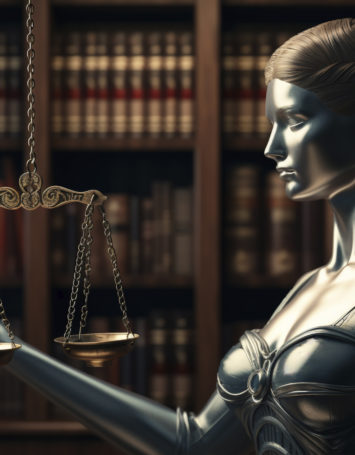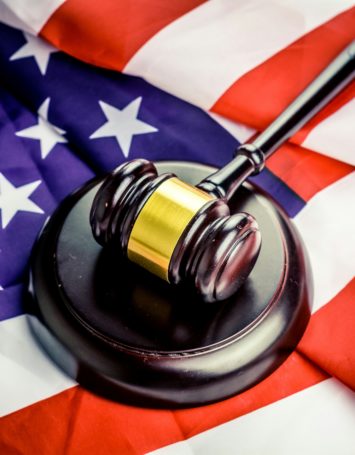Article by Caleb Pollack and Kyle Auteri
In two recent cases, American Axle v. Neapco and Chamberlain v. Techtronic , the Federal Circuit held claims to be patent ineligible under 35 U.S.C. § 101 by using rationales that seem to be based on lack of enablement (§ 112) and obviousness (§ 103), and used language that can be applied highly subjectively, which, when taken out of context, can be applied to virtually any patent claim. For example, in the two decisions discussed below it seems the Federal Circuit has taken its own precedent and applied it beyond the usual software and business method context, using it as a substitute for analysis under Sections 112 and 103. A draft bill for reform of Section 101, such as the one discussed below, would seem to prevent use of such rationales, and may provide more predictability for eligibility analyses.
In American Axle, the Federal Circuit held that a claim for manufacturing a propeller shaft (which transmits torque to the rear axel in a vehicle), having a liner tuned to attenuate at least two types of vibration, was not patent-eligible under 35 U.S.C. § 101. The Court reasoned that “[t]he focus of the claimed advance here is simply the concept of achieving that result, by whatever structures or steps happen to work”; because “[t]he claims here simply instruct the reader to tune the liner … without the benefit of instructions on how to do so” and “to engage in an ad hoc trial-and-error … until a desired result is achieved”. (emphasis added.)
In her dissent, Judge Moore focused on the above language, in addition to other quotes, when she objected to the Court’s rationale as not focusing on eligibility but rather on what was an improper determination of lack of enablement under 35 USC § 112 because of undue experimentation. Judge Moore argued that Section 101 should not be used to invalidate claims under standards identical to those clearly articulated in other statutory sections. Judge Moore stated the Court was not even applying the Section 112 enablement requirement correctly because, for example, the majority focused on how the claims themselves fail to recite how to achieve the claimed tuning, rather than the specification; however, enablement requires determining if the specification combined with the knowledge of a skilled artisan teaches how to perform the claim limitations without undue experimentation. Judge Moore concludes her dissent by arguing that “The majority’s decision expands § 101 well beyond its statutory gate-keeping function …”, and that the use of Section 101 “convert[s] traditional questions of fact (like undue experimentation) into legal ones”.
The Court responded to Judge Moore by stating that “Section 101 is concerned with whether the claims at issue recite a natural law, not whether the specification has adequately described how to make and use the concretely claimed structures and steps”, and “section 101 serves a different function than enablement”. (emphasis added).
However, we believe that this seems to support Judge Moore’s dissent because a proper inquiry regarding how to make and use the claims is part of the enablement inquiry and that analysis should take into account the specification. Under the Court’s actual approach, a separate enablement law (Section 112) would serve no function: if Section 101 were to require the claims alone (ignoring the specification and the knowledge of a skilled artisan) to enable a person to practice the claims, there would be no need for and enablement requirement under Section 112. It does not seem possible that there could be a situation where the claims alone could teach a skilled artisan how to practice the claims without undue experimentation, but somehow the claims combined with the specification and the knowledge of a skilled artisan could not teach a skilled artisan how to practice the claims without undue experimentation. Thus, under the Court’s approach, any claim which is at least not directed to an ineligible concept would seem to necessarily be enabled.
Further, the Court’s statement regarding concern about reciting a natural law appears to contradict the Federal Circuit’s previous explanation that “the ‘directed to’ inquiry cannot simply ask whether the claims involve a patent-ineligible concept”. Similarly, under the United States Patent and Trademark Office (“USPTO”) 2019 Patent Eligibility Guidelines, while not controlling to the Federal Circuit, the directed to inquiry cannot simply ask whether the claim recites a patent ineligible concept because a claim is not directed to an ineligible concept if it integrates that concept into a practical application. The reason that simply identifying that a claim recites or involves an ineligible concept is not enough is because the Supreme Court has made clear that courts must “tread carefully in construing this exclusionary principle lest it swallow all of patent law”; and that “[a]t some level, all inventions at some level embody, use, reflect, rest upon, or apply laws of nature, natural phenomenon, or abstract ideas”.
Another example of what seems to be the Federal Circuit blurring the lines between Section 101 and other sections of the patent statute is in Chamberlain where the Federal Circuit held that a claim for a garage door opener was directed to an abstract idea, using what seemed like an obviousness analysis under Section 103.
Like in American Axle , the Federal Circuit, in Chamberlain, “look[ed] at the focus of the claimed advance over the prior art to determine if the claim’s character as a whole is directed to excluded subject matter”. In Chamberlain, the Federal Circuit reasoned that the claims were patent ineligible because “[t]he only described difference between the prior art movable barrier operator systems and the claimed movable barrier operator system is that the status information about the system is communicated wirelessly”; and that “transmitting data wirelessly is ‘well understood in the art,’ and no other changes to the generically claimed movable barrier operator are recited in the asserted claims”. Thus, it seems to us that the Federal Circuit held that the claims are directed to an abstract idea because they are obvious, without actually going through a proper fact-intensive obviousness analysis under Section 103.
Such an approach avoids the safeguards of Section 103 by not requiring, for example: (1) a motivation to combine; or (2) actual determinations necessary to determine the scope and content of the prior art, ascertain the differences between the claimed invention and the prior art, and resolve the level of ordinary skill in the pertinent art.
Further, an approach which simply focuses on the difference between the prior art and the claims to determine eligibility under Section 101 would seem to suggest (1) a claim for an unimproved garage door opener that did not communicate status information wirelessly may be ineligible solely because there are no differences between the prior art (i.e., anticipated), or (2) in contrast to an improved garage door opener, a claim for the unimproved garage door opener would be eligible under Section 101 because it would not recite the only abstract idea discussed in the case.
The first suggestion cannot be right because “[t]he novelty and nonobviousness of the claims under [35 U.S.C.] §§ 102 and 103 does not bear on whether the claims are directed to patent-eligible subject matter under § 101”. Alternatively, the second suggestion would cut against how improvements to technology at either step one or step two of the Courts’ eligibility analysis show that the patent is eligible.
The problems of such blurred lines have been noticed by Senators Chris Coons and Thom Tillis, and Representatives Doug Collins, Hank Johnson, and Steve Stivers, who on May 22, 2019, released a draft bill for reform of Section 101, which would have among other effects prevented the blurred lines approaches taken in American Axle and Chamberlain.
The proposed bill states: “[t]he eligibility of a claimed invention under section 101 shall be determined without regard to: … whether individual limitations of a claim are well known, conventional or routine … or any other considerations relating to sections 102, 103, or 112 of this title”. The draft bill has other effects, e.g. removing the judicially created exceptions to eligibility making eligibility solely depend on if the claim recites a useful process, machine, manufacture, or composition of matter, and defining “useful” to require specific and practical utility in technology.
A day after the American Axle opinion issued, Representative Doug Collins issued a statement calling for a new patent eligibility test, and referring to bipartisan work on reforming this test, presumably referring to the draft bill released in May 2019. Rep. Collins called for Congress to establish new eligibility test to encourage investment in developing new U.S. technologies and ensure American inventors are not at a global disadvantage. There is of course a risk that this legislative approach may swing the pendulum too far in favor of patent eligibility, and that the proposed law may cause any software or method patent to be patent eligible, including currently ineligbile Bilski type claims. While the proposed Section 101 requires the invention be to “technology”, it also states that “No implicit or other judicially created exceptions to subject matter eligibility, including “abstract ideas,” … shall be used to determine patent eligibility under section 101, and all cases establishing or interpreting those exceptions to eligibility are hereby abrogated.”
The final bill has not yet been introduced.
American Axle & Manufacturing, Inc. v. Neapco Holdings LLC, 2018-1763 (Fed. Cir. Oct. 3, 2019).
Chamberlain Grp. v. Techtronic Indus. Co., 2018-2103, slip op. at 5 (Fed. Cir. Aug. 21, 2019).
American Axle, at 2, 5.
Id., at 10.
Id., at 19-20.
Id., at 15.
Id., dissent at 11.
Id., dissent at 14.
Id., dissent at 12-14.
Id., dissent at 13.
Id., dissent at 1.
Id., Moore’s dissent at 14.
Id., majority at 20-21, emphasis added.
Enfish, LLC v. Microsoft Corp., 822 F.3d 1327, 1335, 118 USPQ2d 1684, 1688 (Fed. Cir. 2016) (emphasis in original).
United States Patent and Trademark Office (“USPTO”) 2019 Revised Patent Subject Matter Eligibility Guidance, 84 FR 4, at 50 (Jan. 7, 2019).
Alice Corp. Pty. Ltd. v. CLS Bank Int’l, 134 S. Ct. 2347, 2354 (2014).
Chamberlain, slip op. at 5.
American Axle, majority at 9.
Chamberlain, slip op. at 5.
Id., at 5-6.
Id., at 7.
Two-Way Media Ltd v. Comcast Cable Communs., LLC, 874 F.3d 1329, 1336 (Fed. Cir. 2017).
Thales Visionix Inc. v. Elbit Systems of America, LLC, 850 F.3d 1343, 1347-48 (Fed. Cir. 2017); (citing Rapid Litigation Management Ltd. v. CellzDirect, Inc., 827 F.3d 1042, 1045 (Fed. Cir. 2016)).
Alice, 134 S. Ct. at 2359.
https://republicans-judiciary.house.gov/press-release/collins-calls-for-new-patent-eligibility-test-following-flawed-court-ruling/
Id.
https://www.tillis.senate.gov/services/files/E8ED2188-DC15-4876-8F51-A03CF4A63E26



